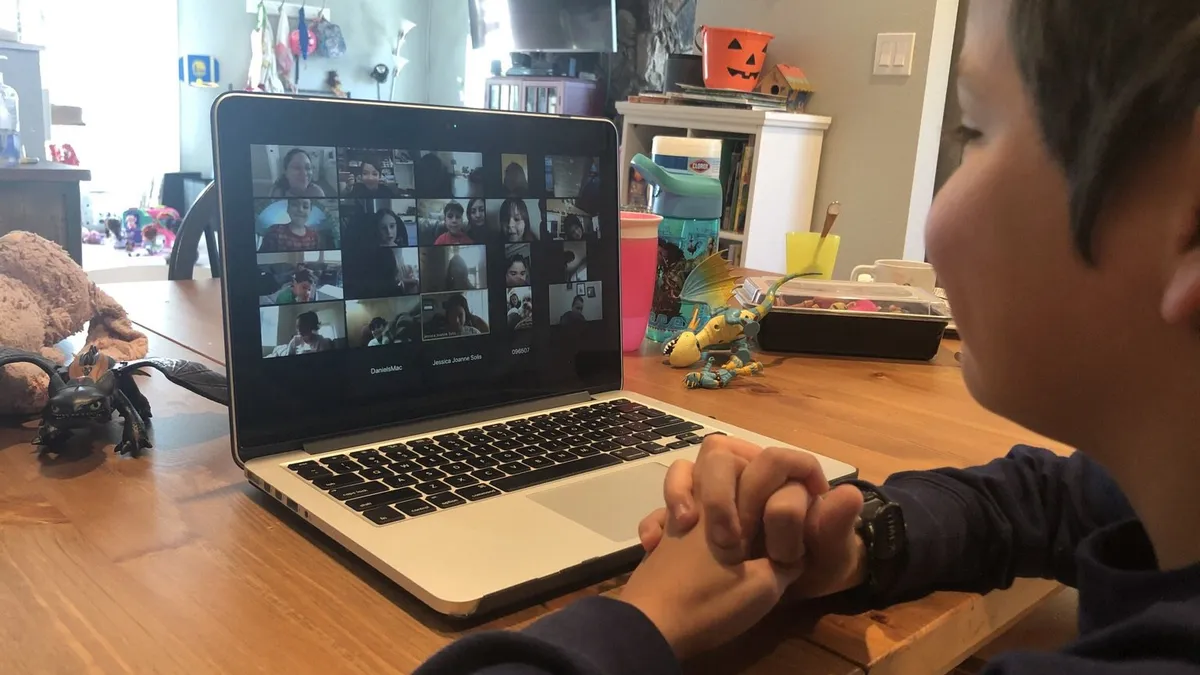With experts predicting and school leaders expecting significant student learning loss because of school closures, advocates, researchers and others stepped up efforts this week to emphasize the role that out-of-school-time programs play in minimizing the damage.
On Thursday, for example, the Afterschool Alliance, the Boys and Girls Clubs and other organizations will hold an afternoon virtual town hall event to draw attention to how after-school and summer programs can be part of economic recovery and provide ongoing learning experiences for students.
“After-school programs and after-school staff are the best-situated people to be addressing the concerns we have about ... kids and this isolation that they are facing,” Jodi Grant, the executive director of the Afterschool Alliance said Tuesday during a virtual Congressional briefing. She added that out-of-school program providers are part of restarting the economy. “Parents can’t return to work if their kids are home or home every other day.”
The Coronavirus Aid, Relief and Economic Security Act, passed in March, included more than $13 billion for K-12 schools, which districts can use to support summer programming. Governors also have discretion in using almost $3 billion in additional relief funds for either K-12 or higher education.
Meanwhile, out-of-school-time programs have “risen to the moment,” Grant said, and have been working well beyond the normal 3-6 p.m. time slot to offer virtual learning, as well as handle meal and learning packet distribution. But she added 75% of programs surveyed have reported they are “at risk of closing permanently or laying off staff.”
In New York City, for example, advocates with the Campaign for Children, a nonprofit, estimate 175,000 children and youth would be affected by $175 million in proposed cuts to some city summer programs.
“These devastating cuts to youth summer programs will disproportionately impact the communities that have suffered the most during the COVID-19 pandemic and continue to exacerbate existing inequities,” Sharon Greenberger, president and CEO of the YMCA of Greater New York, said in a press release.
‘A time of elevated risk’
The expectations for what summer programs can accomplish are also extremely high this year. Tanji Reed Marshall, the director of P-12 practice at The Education Trust, a nonprofit, said during a National Summer Learning Association press briefing Wednesday that summer will be “the opportunity” to not only make up for missed learning during school closures, but to also focus on new learning in preparation for fall and provide additional enrichment for students.
A new analysis of the impact of school closures on students' learning also shows normal variations in students' achievement levels that exist within schools are likely to be wider this fall. In a typical 5th-grade classroom, some students might be testing at a 2nd-grade level, while others have mastered 8th-grade content, according to the analysis from NWEA, a nonprofit assessment organization, and a team of university researchers.
At best, those gaps would remain the same, they wrote. But depending on how much learning was missed during the break — or how much parents were able to supplement the curriculum — there could be an increase in students at "extreme instructional levels."
“Three months away from school has stretched to six,” added Karl Alexander, a professor emeritus at Johns Hopkins University who has conducted extensive work on summer learning loss.
Noting that summer “is a time of elevated risk,” Alexander was also among the authors of “Shaping Summer Experiences,” a recent report from The National Academies of Sciences, Engineering and Medicine. The report concluded summer experiences have an impact on children’s safety and health, as well as academic and social-emotional outcomes.
There is, however, a “lack of systematic attention to creating high-quality summer experiences” for children with the greatest needs, including those in youth detention programs and in foster care, added Dr. Rachel Thornton. A pediatrician who also served on the committee that wrote the report, Thornton noted summer is “fragmented” for many students, with the services they receive throughout the school year often disrupted.
In her role as president of the Council of Chief State School Officers, Wyoming state Superintendent Jillian Balow said her focus is on extended learning and removing barriers that make it difficult for before- and after-school providers and summer programs to collaborate.
“The landscape has changed for all students across America,” she said, adding states are currently responding through a mix of developing frameworks for summer programs, offering guidance and implementing policies to reduce gaps in learning for students.
'An opportunity to engage'
In Birmingham, Alabama, Michael Wilson, a former elementary school principal who will participate in Thursday’s town hall event, said without in-person summer programs, there could be a rise in an "old term from the '80s — latchkey kids."
"One of the things that after-school and summer programs do is give parents affordable care for their children," he said. "We have to face the fact that that’s just not going to happen."
Wilson is currently moving into a new role as principal of the Magic City Acceptance Academy, a charter school expected to open in the fall of 2021 that will focus on serving LGBTQ students in grades 6-12. The nonprofit that will operate the school, Birmingham AIDS Outreach, already runs an after-school program that, Wilson said, has experienced an "uptick" in participation in its virtual program compared to the normal drop-in version.
"We still have an opportunity to engage them," he said, "and if we have to do that digitally right now, it's better than not doing anything."








 Dive Awards
Dive Awards













